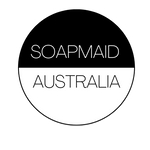Emulsifying Wax (Vegetable)
Emulsifying Wax (Vegetable) | Easy-to-Use Emulsifier for Creams & Lotions
Premium Emulsifying Wax (Vegetable) | Cetearyl Alcohol & Ceteareth 20
Elevate emulsions with vegetable emulsifying wax. Perfect for stable lotions, rich creams and hair conditioners, this natural blend delivers smooth texture and lasting performance. ▼
Cosmetic Applications
Enhance formulations with emulsifying wax for skincare Australia. Provides creamy stability, easy blending and luxurious feel.
- Body Lotion: 5–8% for light, non-greasy emulsion
- Face Cream: 6–10% with shea butter for rich, stable texture
- Hair Conditioner: 3–5% with cetrimonium chloride for detangling
Other Creative Uses
Explore beyond skincare with vegetable emulsifying wax Australia — ideal for natural crafts and wellness.
- Cleansing Balm: 15–20% for oil-to-milk cleanser
- Sunscreen Base: 8% with zinc oxide for stable SPF
- Makeup Primer: 4–6% for smooth, long-wear base
Frequently Asked Questions About Emulsifying Wax (Vegetable) ▼
Q: Is vegetable emulsifying wax safe for skincare in Australia?
A: Yes — Cetearyl Alcohol & Ceteareth 20, TGA-compliant, non-ionic, gentle on skin.
Q: How does it differ from beeswax or lecithin?
A: Self-emulsifying system — creates true emulsions vs. beeswax (thickener) or lecithin (weak). Stable at 5–10%.
Q: What’s the usage rate in lotions and creams?
A: Use 5–10% — 5–7% light lotion, 8–10% thick cream. Add to oil phase at 70°C.
Q: Can it be used in hair conditioners?
A: Yes — 3–5% with cationic for detangling and shine. pH 4–5 for best performance.
Q: Does it ship across Australia?
A: Yes — delivery Australia wide.
Q: What makes your emulsifying wax unique?
A: Vegetable-derived, CAS 67762-27-0 + 68439-49-6 — clean melt, high stability, no separation.
Q: How to store in hot Aussie climates?
A: ≤30°C, sealed — 2+ year shelf. In QLD/NT, keep in cool cupboard to prevent softening.
🔍 Resources
SPECIAL ORDERS FOR OVER 100kg – Email info@soapmaid.com for personalised quotes.

